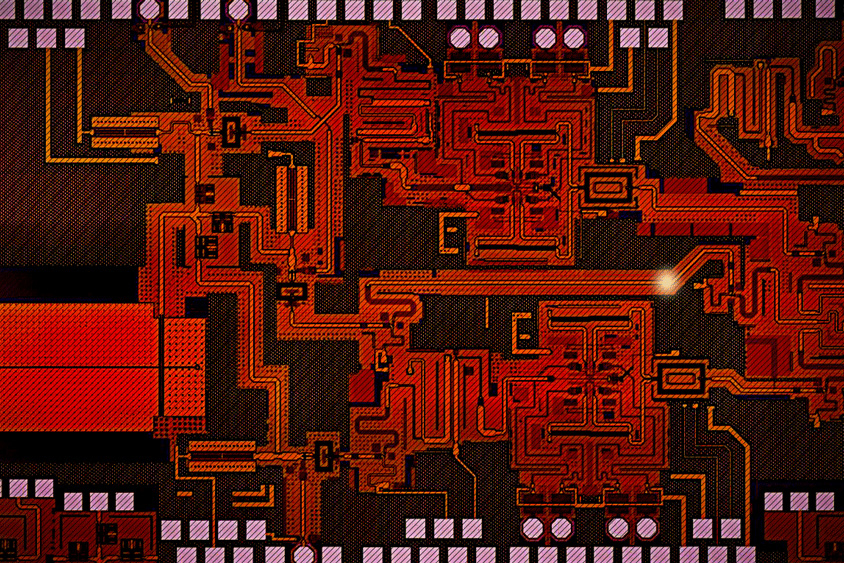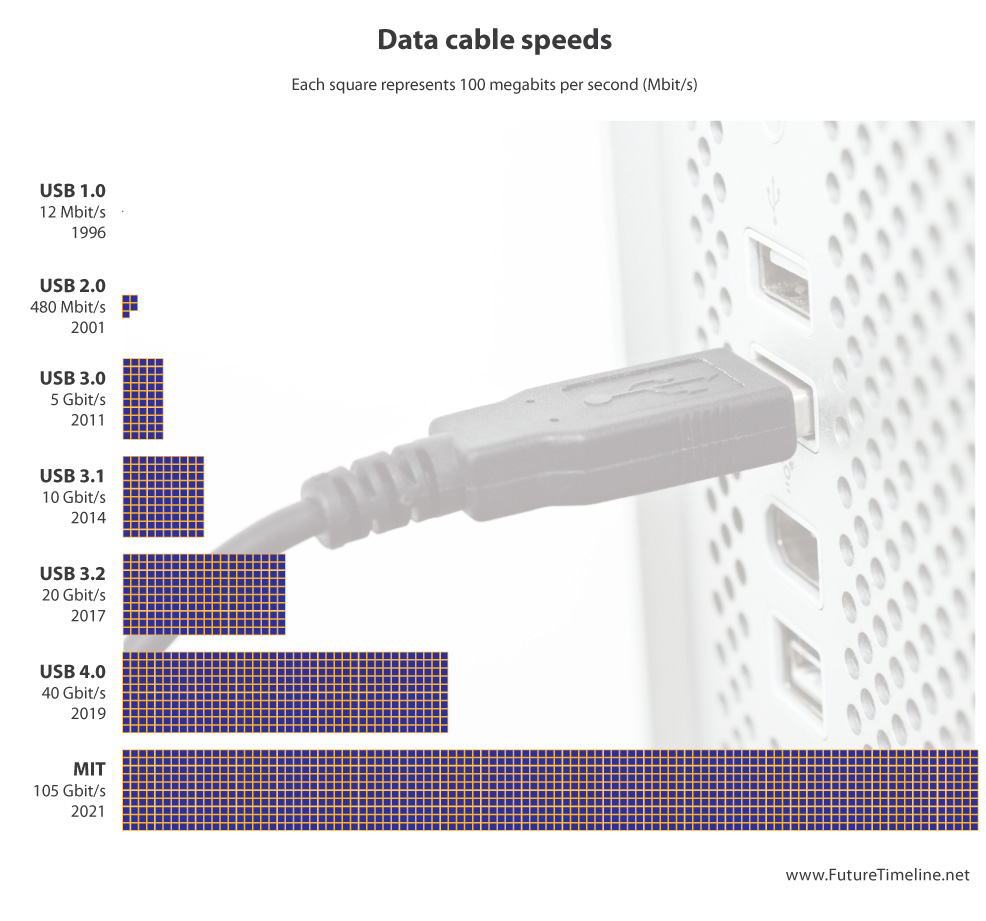
11th March 2021 New data cable exceeds 100 Gbit/s Researchers have developed a new data transfer system that is 20 times faster than USB 3.0. This combines high-frequency silicon chips with a polymer cable as thin as a strand of hair. The system could boost energy efficiency in data centres and lighten the loads of electronics-rich spacecraft. Researchers presented their breakthrough at the recent IEEE International Solid-State Circuits Conference, held virtually. "There's an explosion in the amount of information being shared between computer chips – cloud computing, the Internet, big data. And a lot of this happens over conventional copper wire," says Jack Holloway, who led the research. Holloway completed his PhD in MIT's Department of Electrical Engineering and Computer Science last year and currently works for Raytheon. Copper wires, like those found in today's USB or HDMI cables, are power-hungry – especially when dealing with heavy data loads. Despite a growing demand for faster data transmission through conduits longer than a metre, the typical solution has been "increasingly bulky and costly" copper cables, Holloway explains. "There's a fundamental trade-off between the amount of energy burned and the rate of information exchanged," says Holloway. One alternative to copper wire is fibre-optic cable, but that has its own problems. Whereas copper wires use electrical signalling, fibre-optics use photons. That allows fibre-optics to transmit data quickly and with little energy dissipation. But silicon computer chips generally don't play well with photons, making interconnections between fibre-optic cables and computers a challenge. "There's currently no way to efficiently generate, amplify, or detect photons in silicon," says Holloway. "There are all kinds of expensive and complex integration schemes, but from an economics perspective, it's not a great solution." Holloway's team developed a new link that combines the benefits of both copper and fibre-optic conduits while avoiding their drawbacks. The conduit is made of plastic polymer, so is lighter and potentially cheaper to manufacture than traditional copper cables. But when operated with sub-terahertz electromagnetic signals, the polymer link is far more energy-efficient than copper in transmitting a high data load. The new link's efficiency rivals that of fibre-optic but has a key advantage of being directly compatible with silicon chips, without any special manufacturing.
The team engineered their own low-cost silicon chips to pair with the polymer conduit. These new chips generated signals at frequencies that silicon chips would normally struggle to operate at. However, they had enough power to transmit data directly into the conduit, with a total bandwidth of 105 gigabits per second (Gbit/s), more than 20 times faster than USB 3.0 and more than 2.5 times faster than USB4. This clean connection from the chips to the conduit means the overall system can be manufactured with standard, cost-effective methods, according to the researchers. Furthermore, the new link provides a significant reduction in size compared to traditional copper. The cross-sectional area of the cable is just 0.4 millimetres by a quarter millimetre, making it "super tiny, like a strand of hair," says Ruonan Han, associate professor and Holloway's PhD adviser. Despite its slim size, the cable can transfer huge amounts of data by sending signals over three different parallel channels, separated by frequency. In future work, Han hopes to make the polymer conduits even faster by bundling them together. "Then the data rate will be off the charts," he says. "It could be one terabit per second, still at low cost." The researchers suggest "data-dense" applications, like server farms, could be early adopters of the new links, since they could dramatically cut data centres' high energy demands. The link could also be a key solution for the aerospace and automotive industries, which place a premium on small, light devices. And one day, the link could replace the consumer electronics cables in homes and offices, thanks to the link's simplicity, low cost, and high speed.
Comments »
If you enjoyed this article, please consider sharing it:
|








